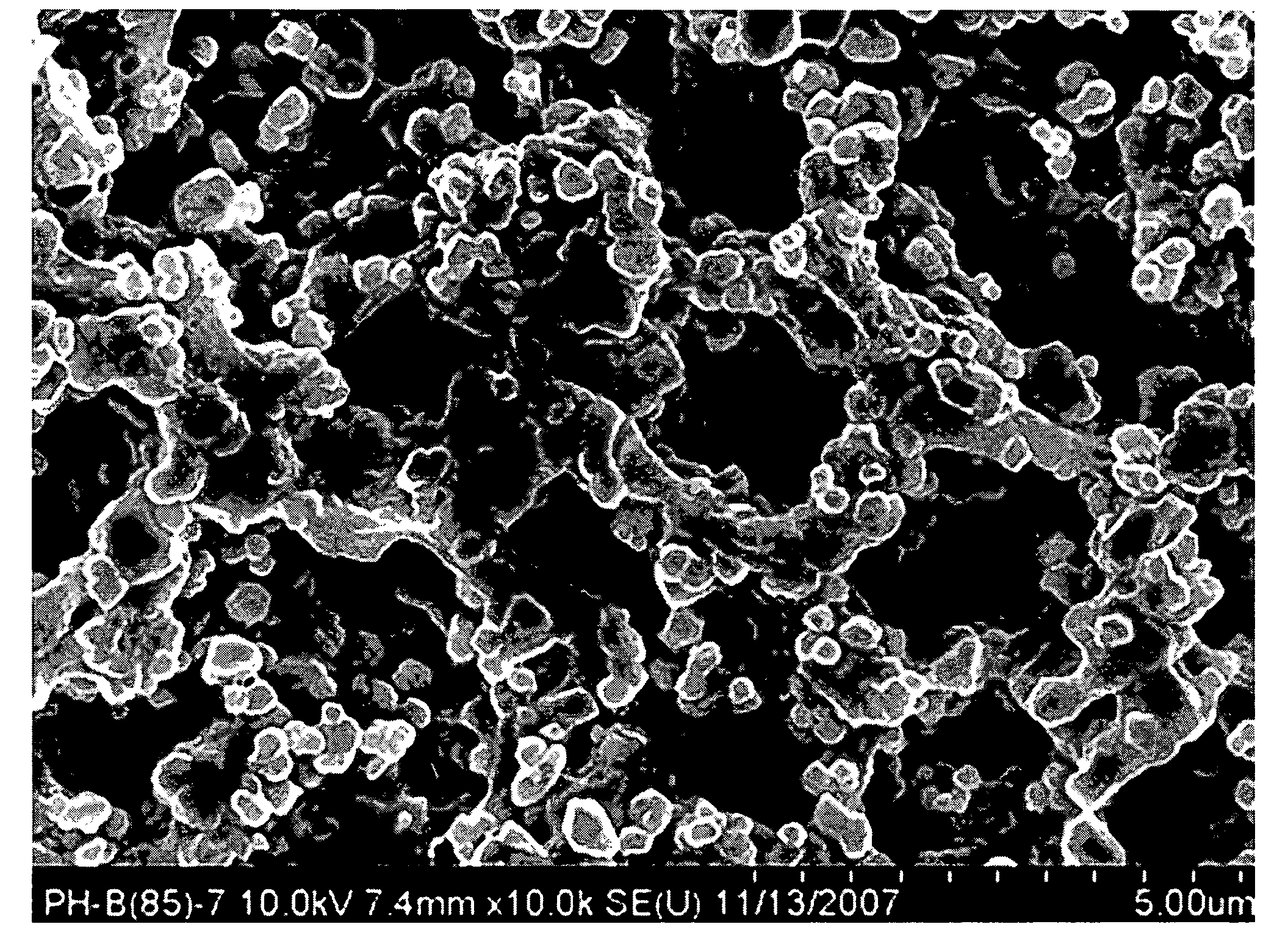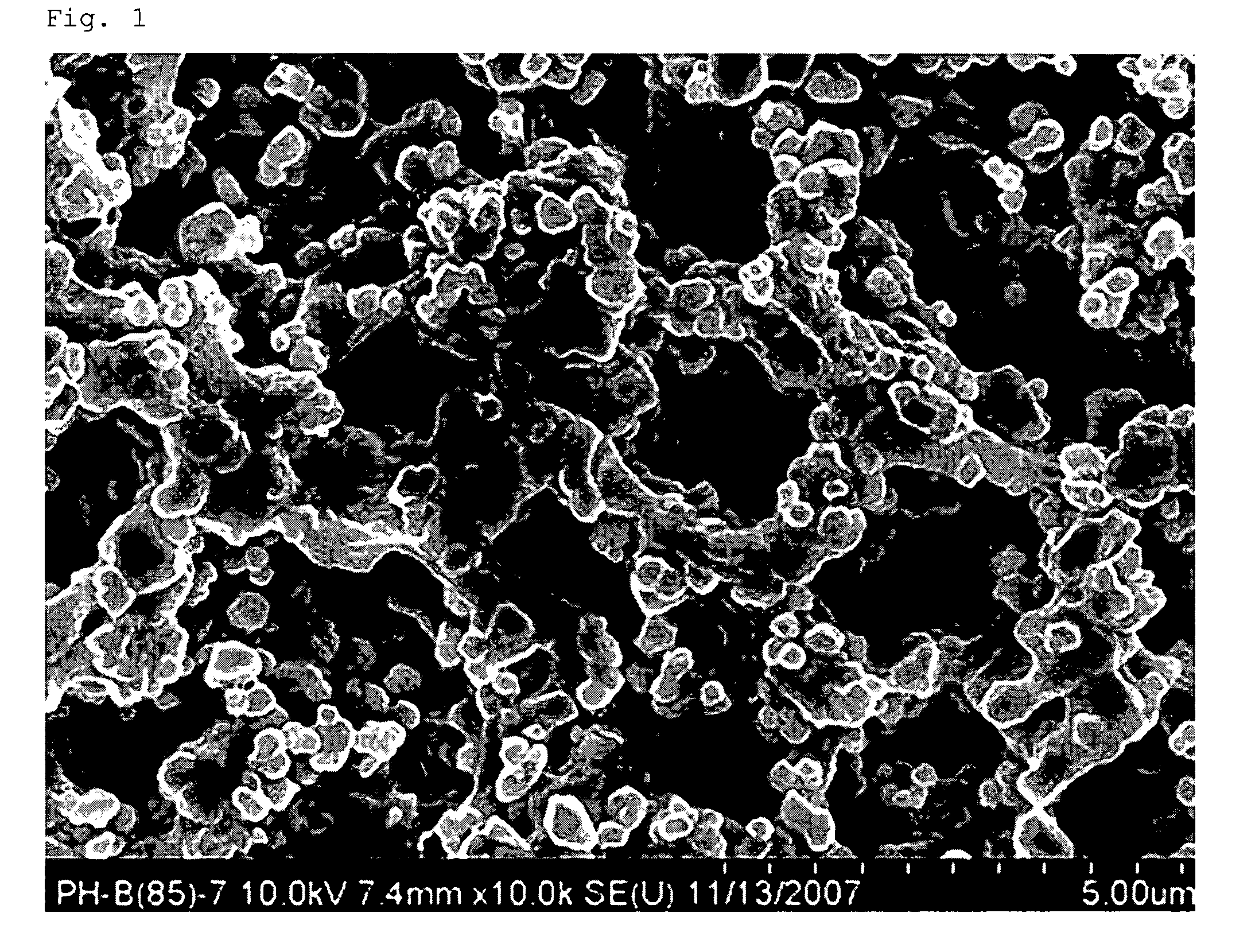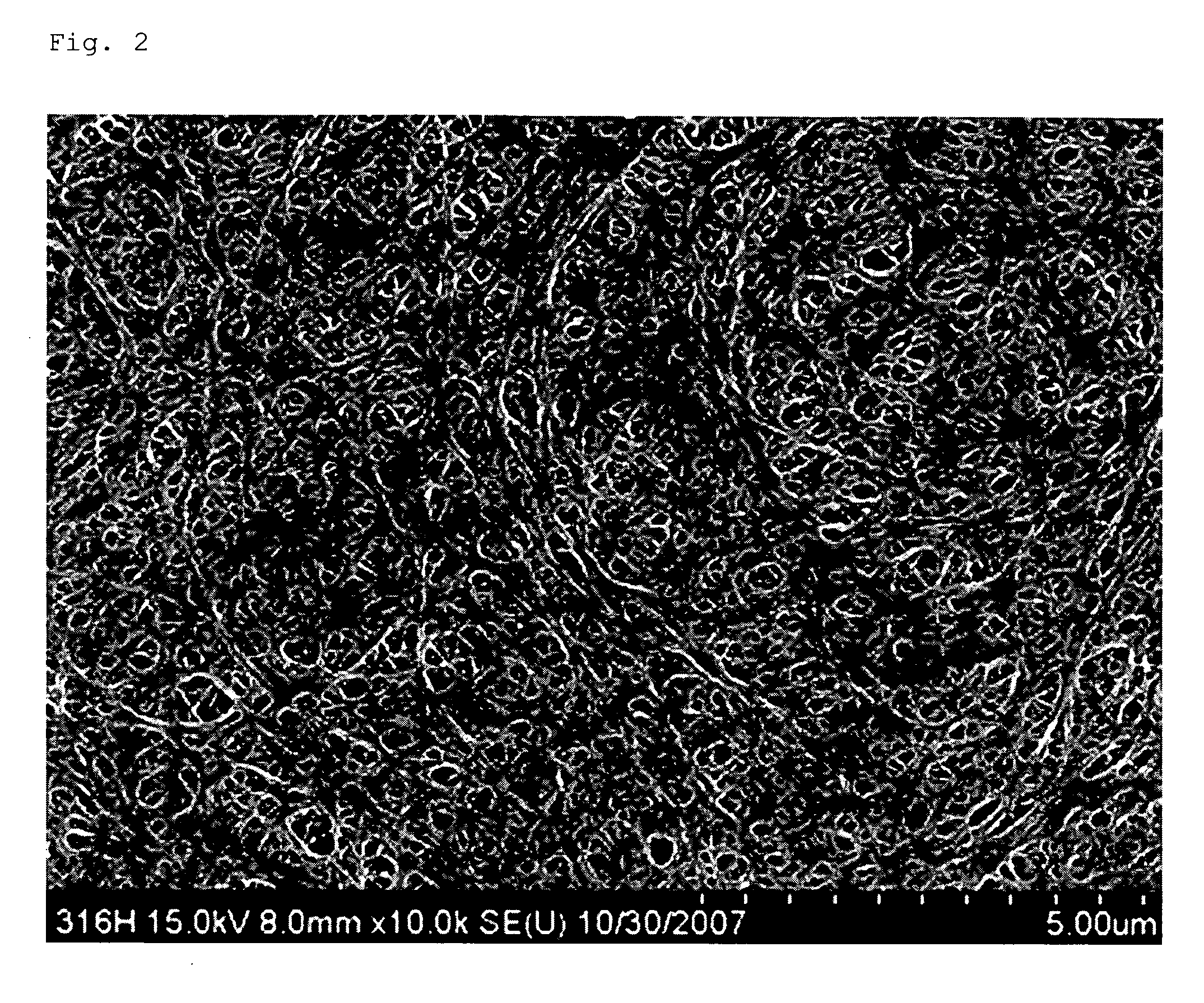Microporous polyolefin composite film with a thermally stable porous layer at high temperature
- Summary
- Abstract
- Description
- Claims
- Application Information
AI Technical Summary
Benefits of technology
Problems solved by technology
Method used
Image
Examples
example 1
[0100]In order to prepare the polyolefin microporous film, high density polyethylene having a weight average molecular weight of 3.8×105 is used, and a mixture in which dibutyl phthalate and paraffin oil (kinematic viscosity at 40° C.: 160 cSt) is mixed at a rate of 1:2 is used as a diluent, and each content of the polyethylene and the diluent is 30 wt % and 70 wt %, respectively.
[0101]This composition is extruded at a temperature of 240° C. using a dual-axial compounder having a T-die, and passed through an area, of which temperature is set to 180° C., so as to induce a phase separation, and then a sheet is prepared using a casting roll. The sheet is prepared by a successive bi-axial stretching method in which a stretching rate is six times in each of a MD and a TD, and a stretching temperature is 121° C. Herein, a heat-setting temperature is 128° C., and a heat-setting width is 1-1.2-1.1. A final film has a thickness of 16 μm and a gas permeability of 3.5×10−5 Darcy. A solution fo...
example 2
[0102]The same the polyolefin microporous film as in the example 1 is used, and the solution for forming the polymer coating layer is prepared by dissolving polyarylate (PAR) having a glass transition temperature of 201° C. in THF solvent and also adding alumina (Al2O3, average particle size of 400 nm) and nonsolvent of pentanol. In the composition of the solution, resin / particle / solvent / nonsolvent is 4 / 8 / 82 / 6 wt %. One surface is coated by the bar coating method, and then the coated film is dried in an oven of 60° C. for 30 minutes.
[0103]A photograph of a scanning electron microscope showing a surface of the manufacture microporous polyolefin composite film is illustrated in FIG. 1.
example 3
[0104]The same the polyolefin microporous film as in the example 1 is used, and the solution for forming the polymer coating layer is prepared by dissolving polycarbonate (PC) having a melting temperature of 231° C. in THF solvent and also adding nonsolvent of pentanol and silica (SiO2, average particle size of 400 nm) which is surface-treated with 3-methacryloxypropyltrimethoxysilane (γ-MPS). In the composition of the solution, resin / particle / solvent / nonsolvent is 4 / 8 / 82 / 6 wt %. One surface is coated by the bar coating method, and then the coated film is dried in an oven of 60° C. for 30 minutes.
PUM
| Property | Measurement | Unit |
|---|---|---|
| Temperature | aaaaa | aaaaa |
| Temperature | aaaaa | aaaaa |
| Temperature | aaaaa | aaaaa |
Abstract
Description
Claims
Application Information
 Login to View More
Login to View More - R&D Engineer
- R&D Manager
- IP Professional
- Industry Leading Data Capabilities
- Powerful AI technology
- Patent DNA Extraction
Browse by: Latest US Patents, China's latest patents, Technical Efficacy Thesaurus, Application Domain, Technology Topic, Popular Technical Reports.
© 2024 PatSnap. All rights reserved.Legal|Privacy policy|Modern Slavery Act Transparency Statement|Sitemap|About US| Contact US: help@patsnap.com










